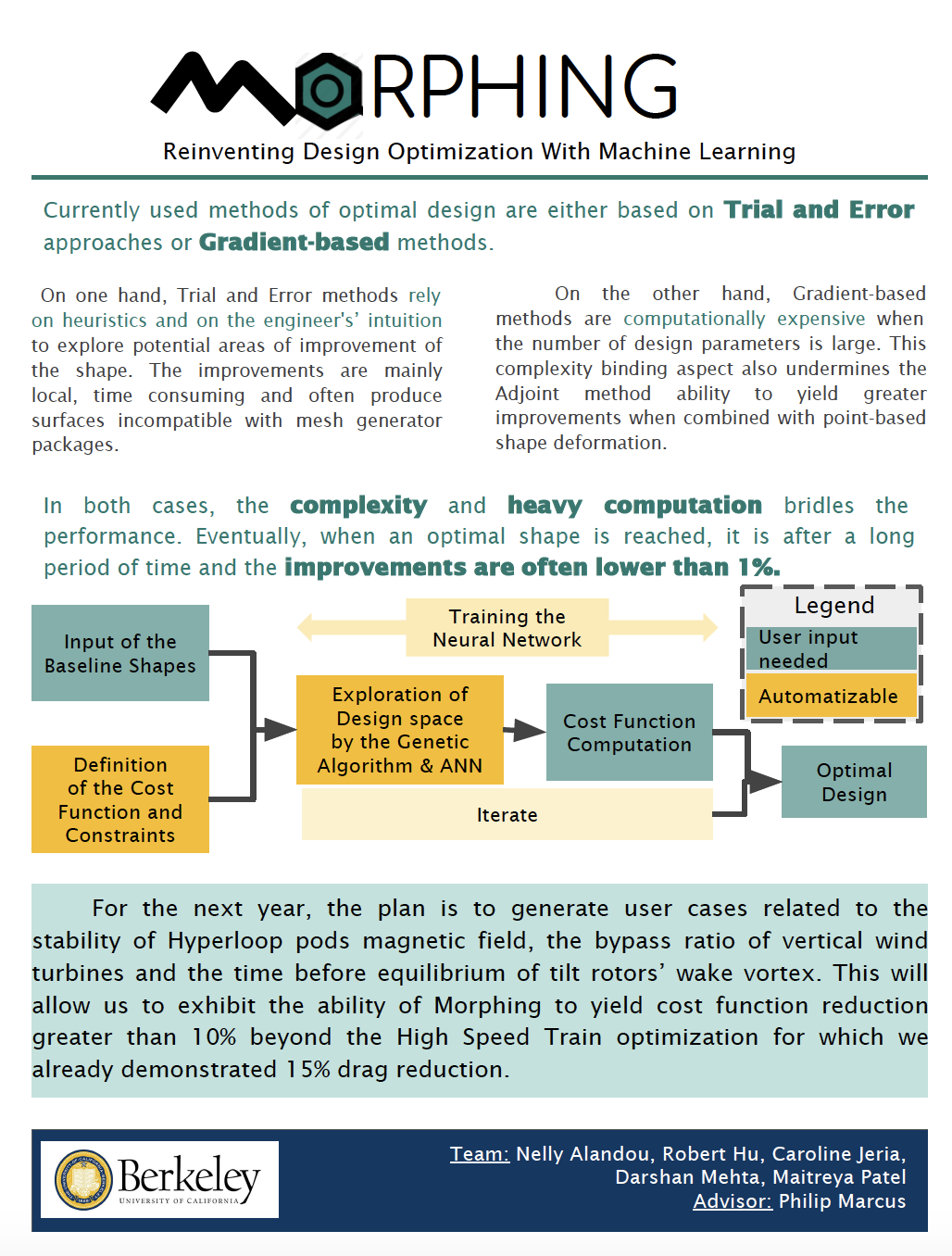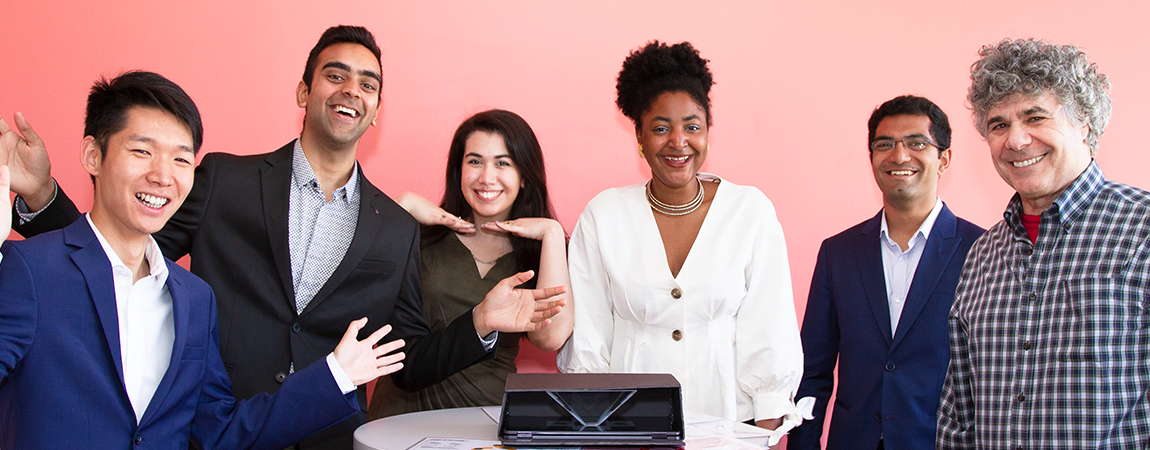Design-by-Morphing is a tool that finds the optimal design for objects considering their aerodynamic, hydrodynamic, thermal, and/or structural performance. The team worked to bring this tool to market and to find new applications, industries and partners.
Team: Nelly Alandou, Robert Hu, Caroline Jeria, Darshan Mehta, Maitreya Patel Advisor: Philip Marcus
Reinventing Design Optimization With Machine Learning
Currently used methods of optimal design are either based on Trial and Error approaches or Gradient-based methods.
On one hand, Trial and Error methods rely on heuristics and on the engineer’s’ intuition to explore potential areas of improvement of the shape. The improvements are mainly local, time consuming and often produce surfaces incompatible with mesh generator packages.
On the other hand, Gradient-based methods are computationally expensive when the number of design parameters is large. This complexity binding aspect also undermines the Adjoint method ability to yield greater improvements when combined with point-based shape deformation.
In both cases, the complexity and heavy computation bridles the performance. Eventually, when an optimal shape is reached, it is after a long period of time and the improvements are often lower than 1%.
For the next year, the plan is to generate user cases related to the stability of Hyperloop pods magnetic field, the bypass ratio of vertical wind turbines and the time before equilibrium of tilt rotors’ wake vortex. This will allow us to exhibit the ability of Morphing to yield cost function reduction greater than 10% beyond the High Speed Train optimization for which we already demonstrated 15% drag reduction.

← View all Capstone Projects





